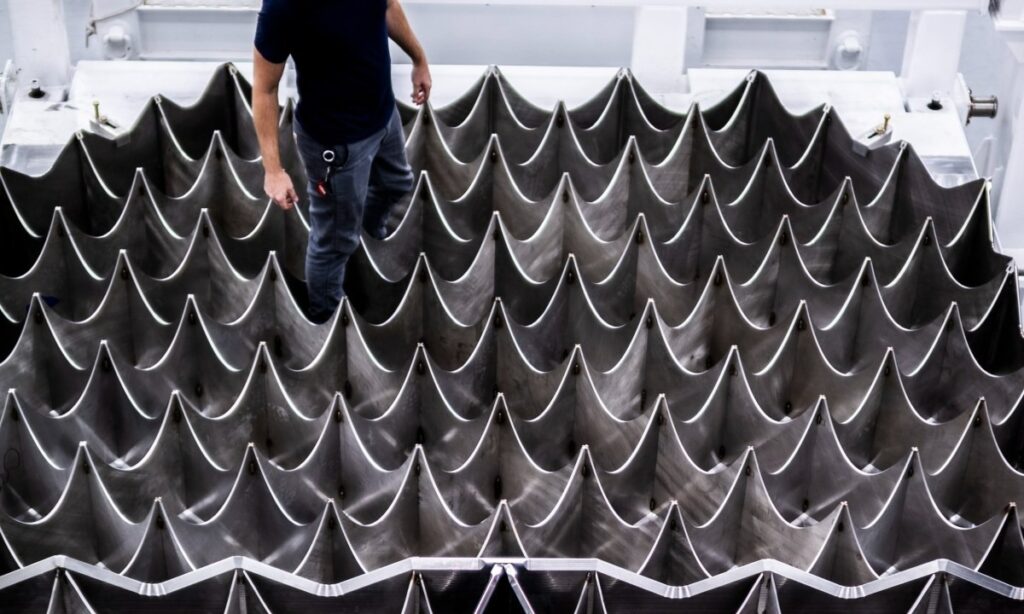
Rocket landings shouldn’t feel like watching someone parallel park a school bus, yet SpaceX’s previous grid fin design made precise touchdowns unnecessarily dramatic. The company just unveiled massively redesigned grid fins for its Super Heavy booster—50% larger surface area with only three fins instead of four. These fins now sit lower on the booster to dodge the thermal beating they used to take during stage separation, according to Digital Trends.
Three Beats Four in Rocket Math
Your instinct might scream that fewer fins equals less control, but SpaceX’s engineering evolution proved otherwise. The three-fin configuration allows the booster to descend at much steeper angles, dramatically improving landing precision. This matters because those mechanical “chopstick” arms at the launch tower need surgical accuracy to catch a 20-story rocket traveling at highway speeds.
SpaceX even posted photos of an engineer casually standing atop one fin—a scale reference that makes clear these aren’t minor tweaks.
NASA’s Moon Plans Hang in the Balance
These fins aren’t just SpaceX showing off—they’re critical infrastructure for NASA’s Artemis lunar program. The space agency needs Starship working flawlessly for cargo delivery and crew transport to the Moon, targeting 2027 for Artemis III. Every failed booster recovery delays the timeline and burns through budgets faster than rocket fuel.
Reliable grid fins mean reliable reusability, which translates to the sustainable launch cadence NASA requires for sustained lunar operations.
Flight Test 10 Becomes the Proving Ground
The redesigned fins face their first real test on Starship Flight 10, scheduled no earlier than August 22, 2025, according to The Independent. This isn’t just another test flight—it’s validation that SpaceX can iterate hardware fast enough to meet both its Mars ambitions and NASA’s Moon deadlines.
Success here could accelerate launch frequencies and drive down access costs for everyone from satellite companies to space tourists. The grid fin redesign represents exactly the kind of rapid engineering evolution that’s making space feel less like science fiction and more like an emerging transportation industry you might actually use someday.
Last modified: August 14, 2025







